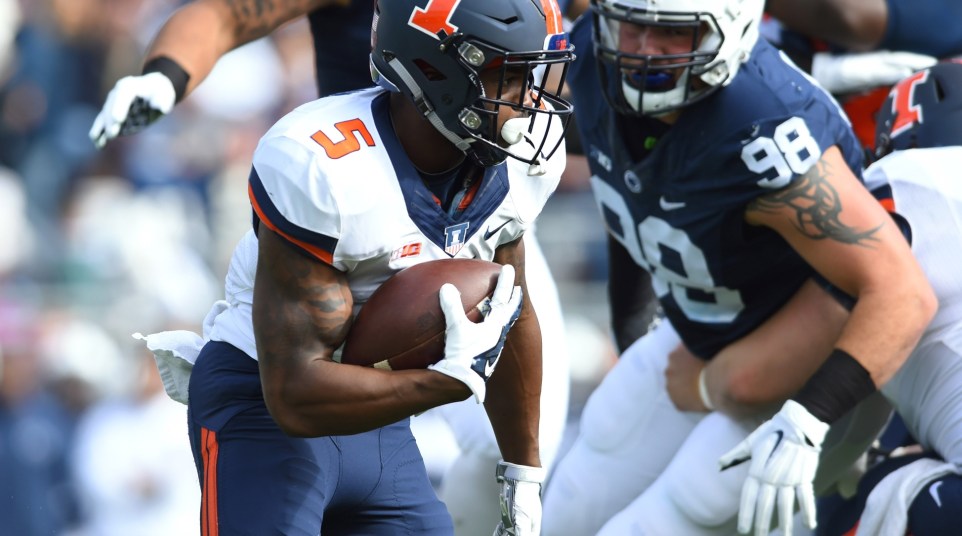Three keys for Illinois in 2016
Leading up to the start of the 2016 season, we’ll preview three key factors for every B1G team to have success.
Here are Illinois’:
1. Finish more drives
This has been on Illinois’ to-do list for several seasons. Three of the past four seasons, the Illini have ranked last in converting drives into points inside the red zone. Last year was the worst of those seasons.
Illinois had a 72.5 percent conversion rate when reaching the end zone, ranking 117th in the NCAA. Of its 40 attempts, only 20 resulted in touchdowns. The struggle to find the end zone in scoring position also led to a 22.5 points per game average, its lowest since 2012.
Efficiency in the red zone has to improve for the Illini to be competitive this season. Leaving points on the field has been an all-too-common occurrence in Champaign. Illinois has to find way to cross the goal line when they get inside the opponent’s 20-yard-line.
2. Keep opposing quarterbacks on the move
For Duwuane Smoot, putting pressure on the passer wasn’t a tough chore. The defensive lineman recorded eight sacks in his junior season, leading the team in the category.
No other defender for the Illini exceeded two.
As a team, Illinois recorded just 19 sacks in 2015, the second-worst total in the B1G. The good news? The front line returns a good portion of its production, including Smoot.
RELATED: Hardy Nickerson Jr.’s transfer a major addition for Illini
Jihad Ward is gone, which is a significant loss, but Rob Bain and Chunky Clements join Smoot for what should be a solid unit this fall. The defensive line has already been tabbed as the best position group on that side of that football.
Top unit or not, the praise doesn’t mean anything if Illinois isn’t more disruptive against opposing quarterbacks.
Lovie Smith understands defense. The Illini have experience. Those ingredients need to produce more hurries and sacks if Illinois hopes to get back to bowl eligibility.
3. Hit the ground running
The statue of legendary Illinois running back Red Grange outside Memorial Stadium was more productive on the ground than what the team was last season.
How bad was it? In five of the team’s eight conference games, the Illini ran for fewer than 80 total yards. Against Ohio State, Illinois backs tallied 20 yards on 25 attempts. They had just 13 rushing touchdowns all season, one of the lowest totals in all of college football.
RELATED: Lovie Smith hasn’t yelled once since taking over at Illinois
Somehow, it’s worse than that.
If you omit the 382-yard performance against Purdue, the Illini totaled just 521 yards and three touchdowns against B1G competition last year. That’s not good.
Ke’Shawn Vaughn has strong upside and Smith and his coaching staff seem eager to establish a presence on the ground. Those are good things for the offense.
Throwing the football will still be the centerpiece of the offense, especially with Wes Lunt at quarterback. After all, the Illini did rank third in passing yardage in the conference last season. But integrating the running game into a pass-first approach is essential for offensive balance in Champaign.
Vaughn accounted for nearly half of Illinois’ total rushing production as a freshman. That’s a pretty good building block to try and reconstruct the decimated ground attack.
